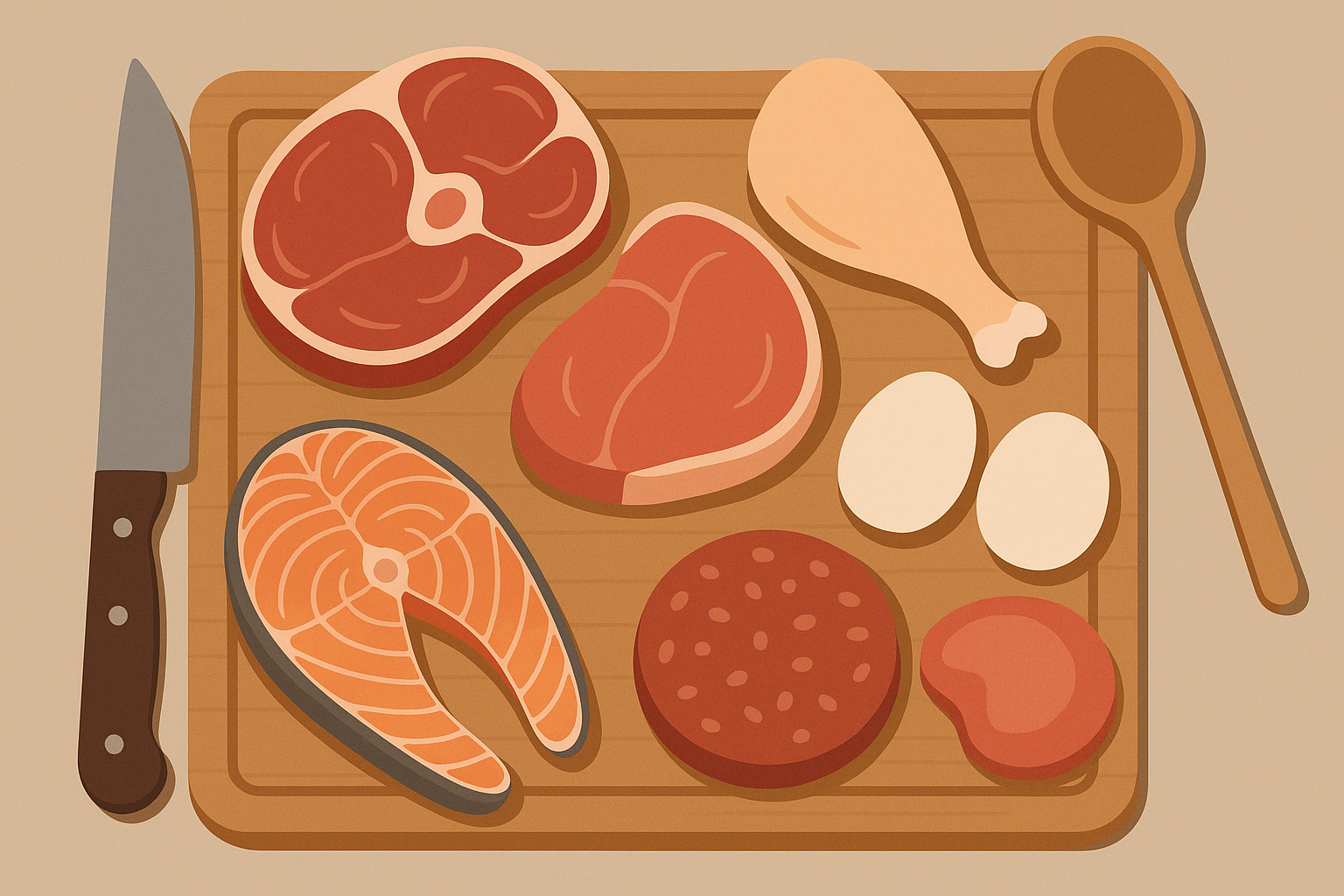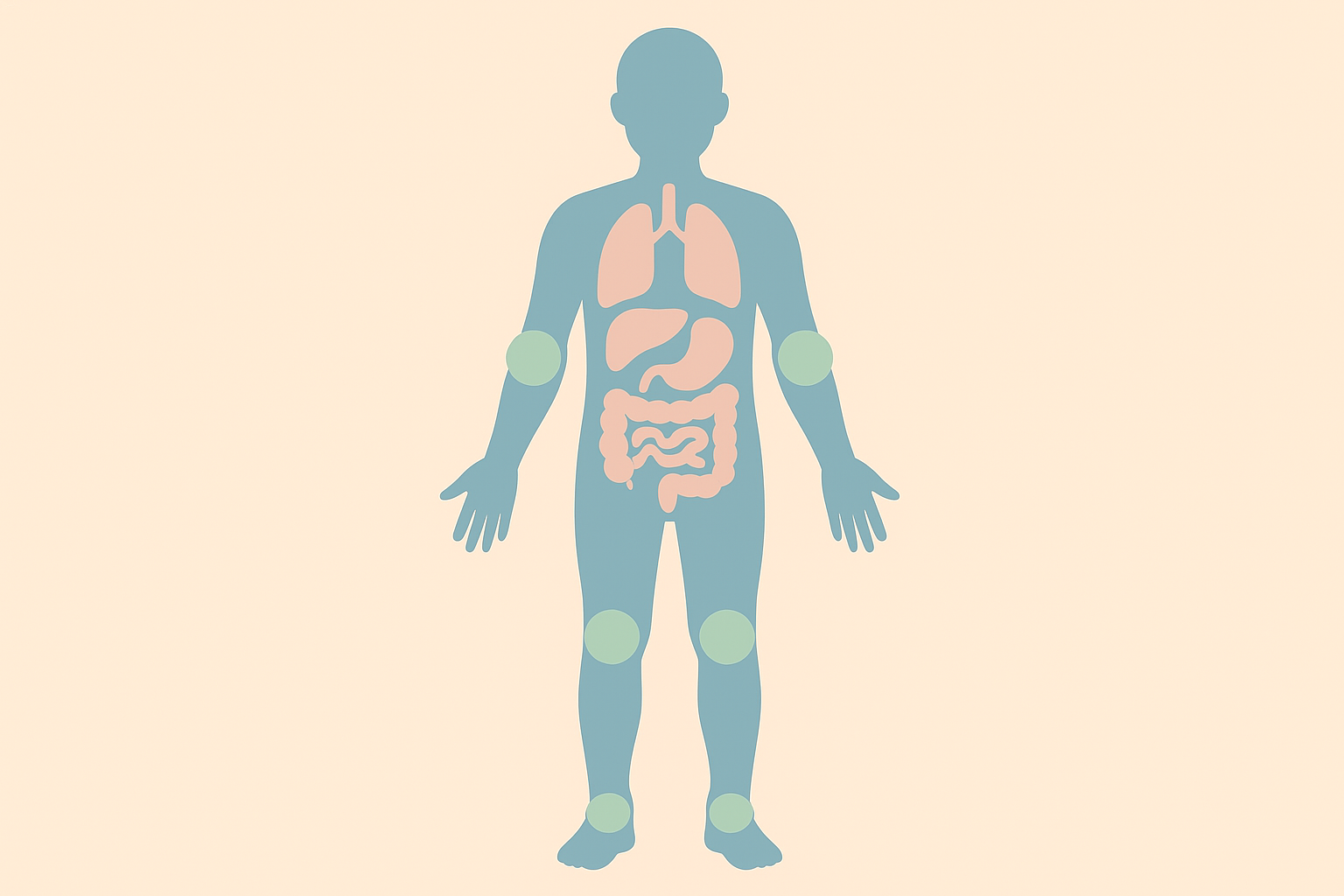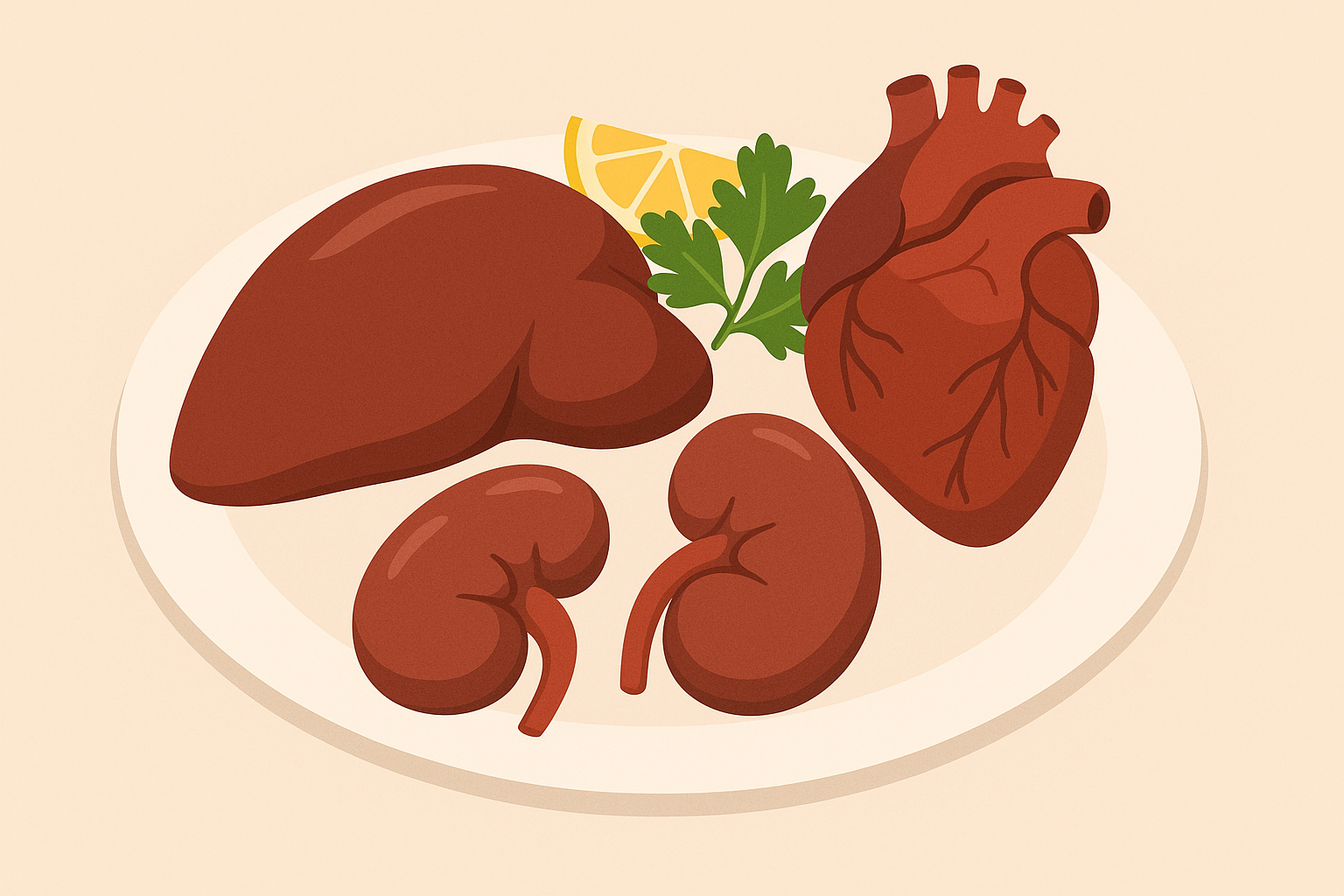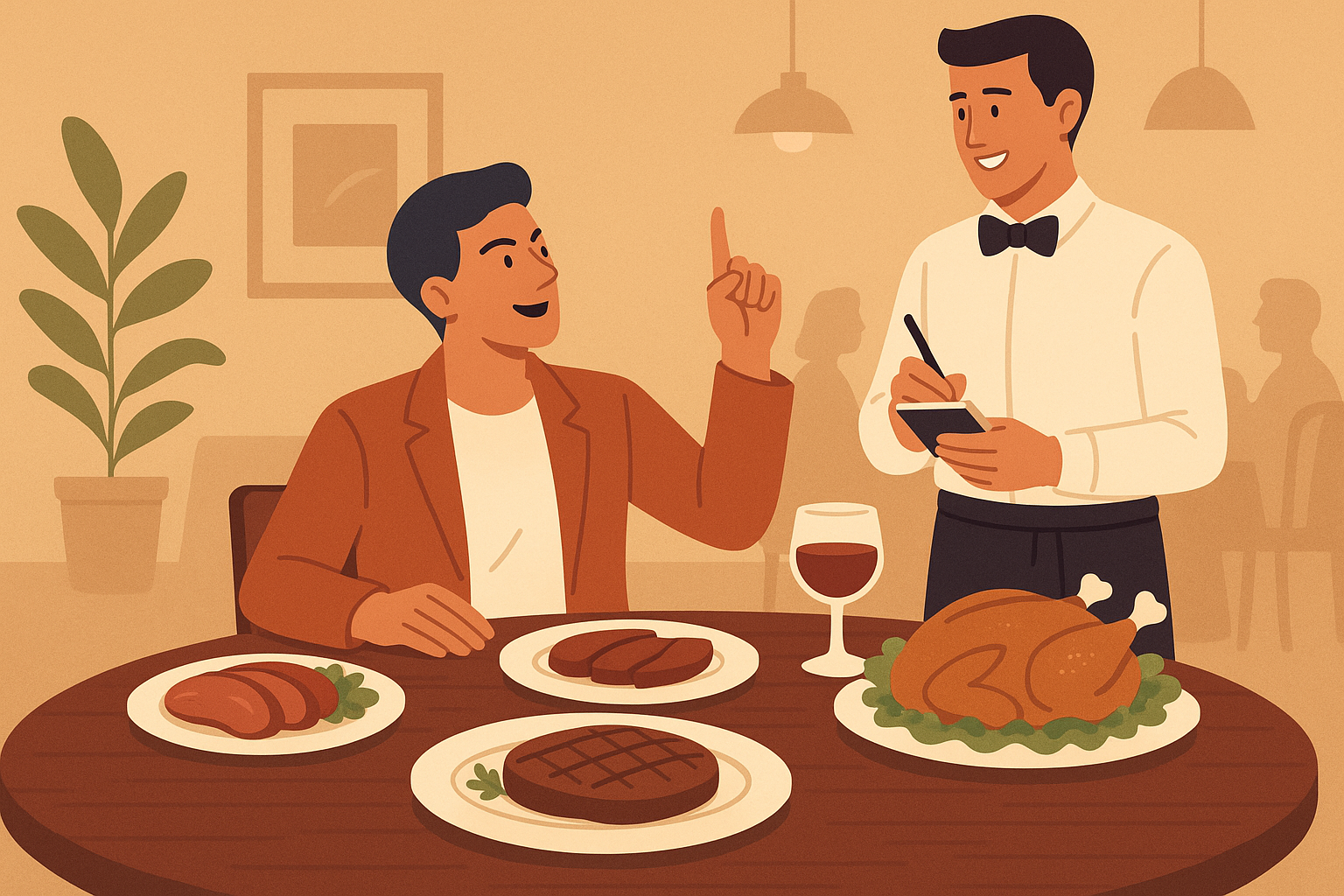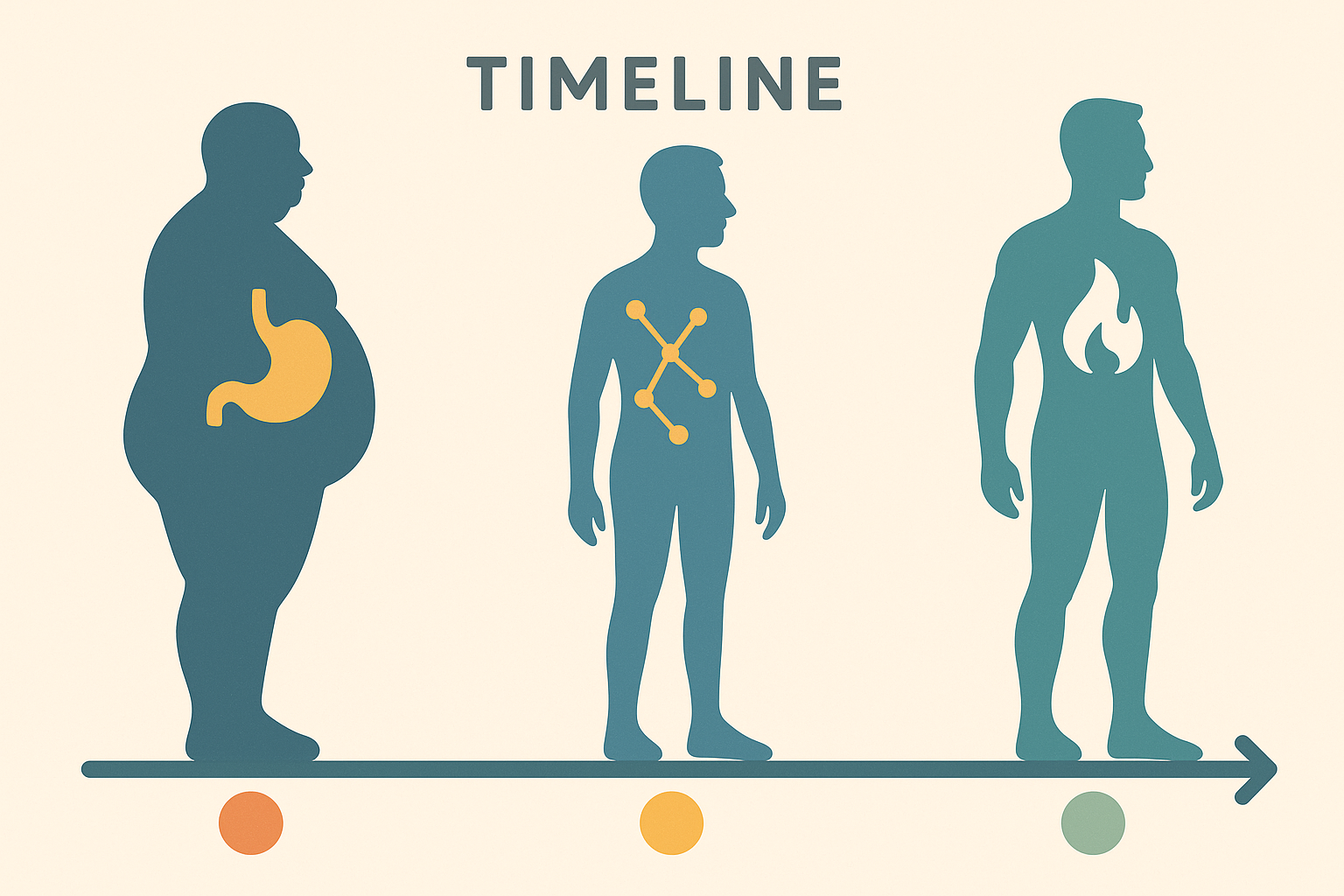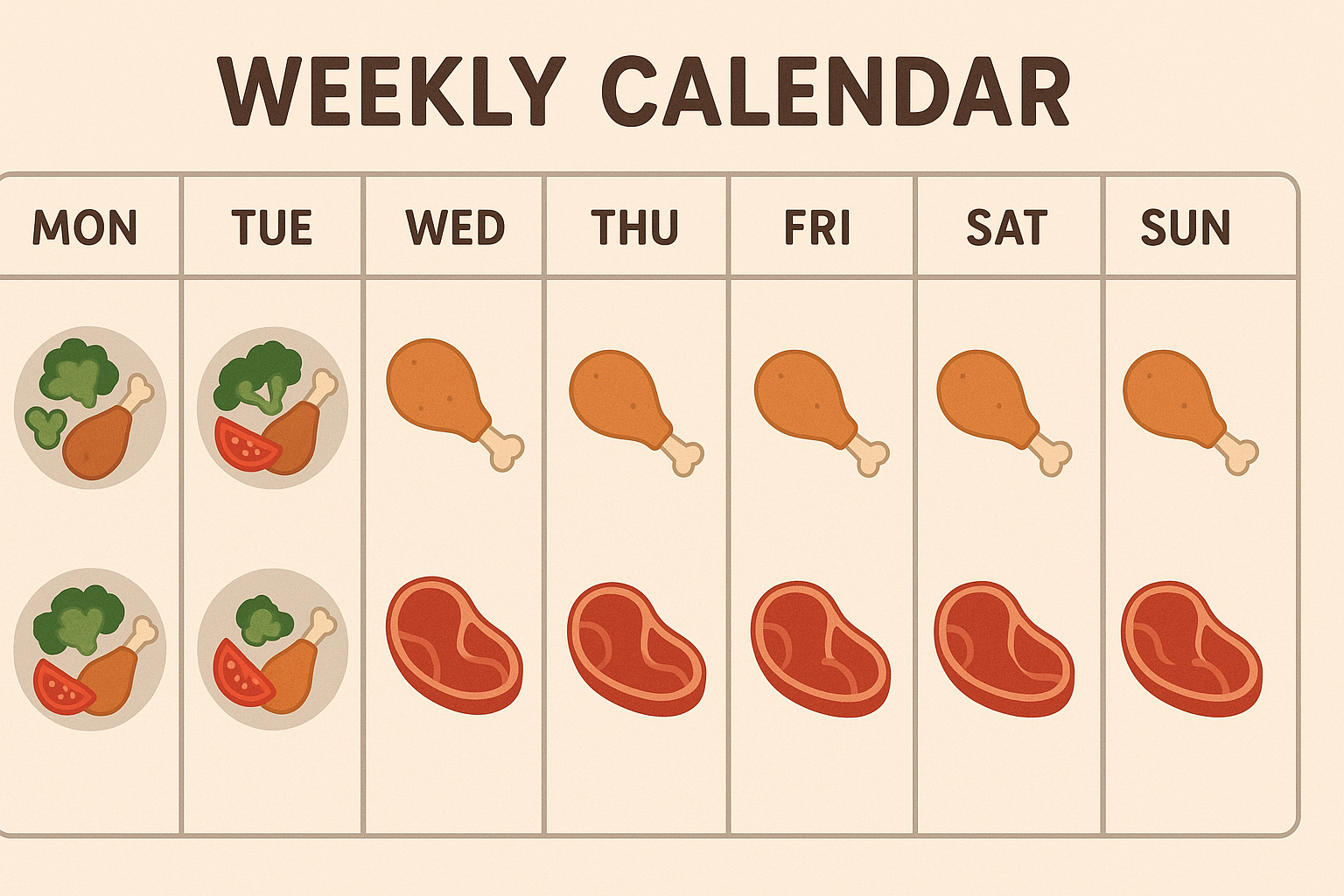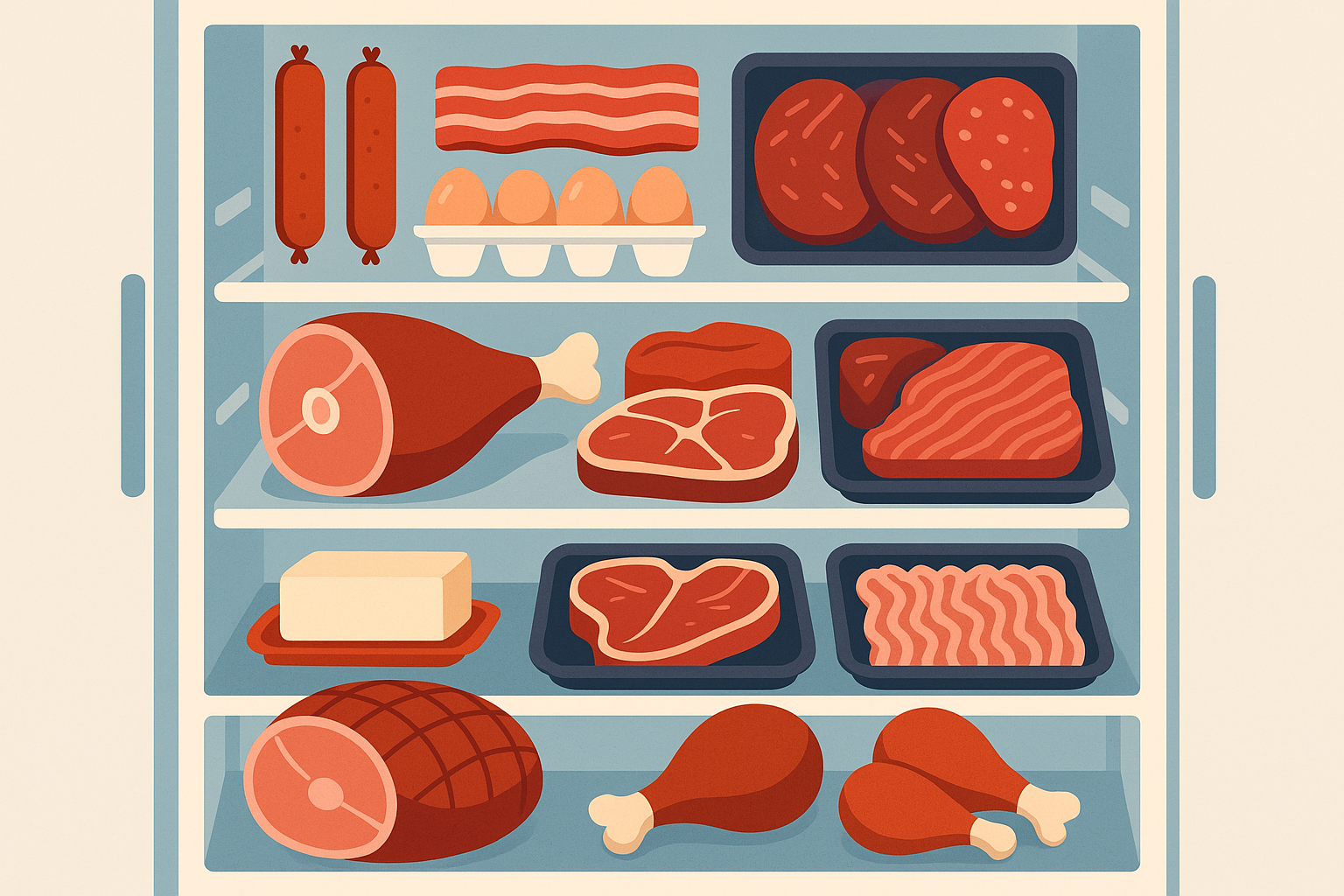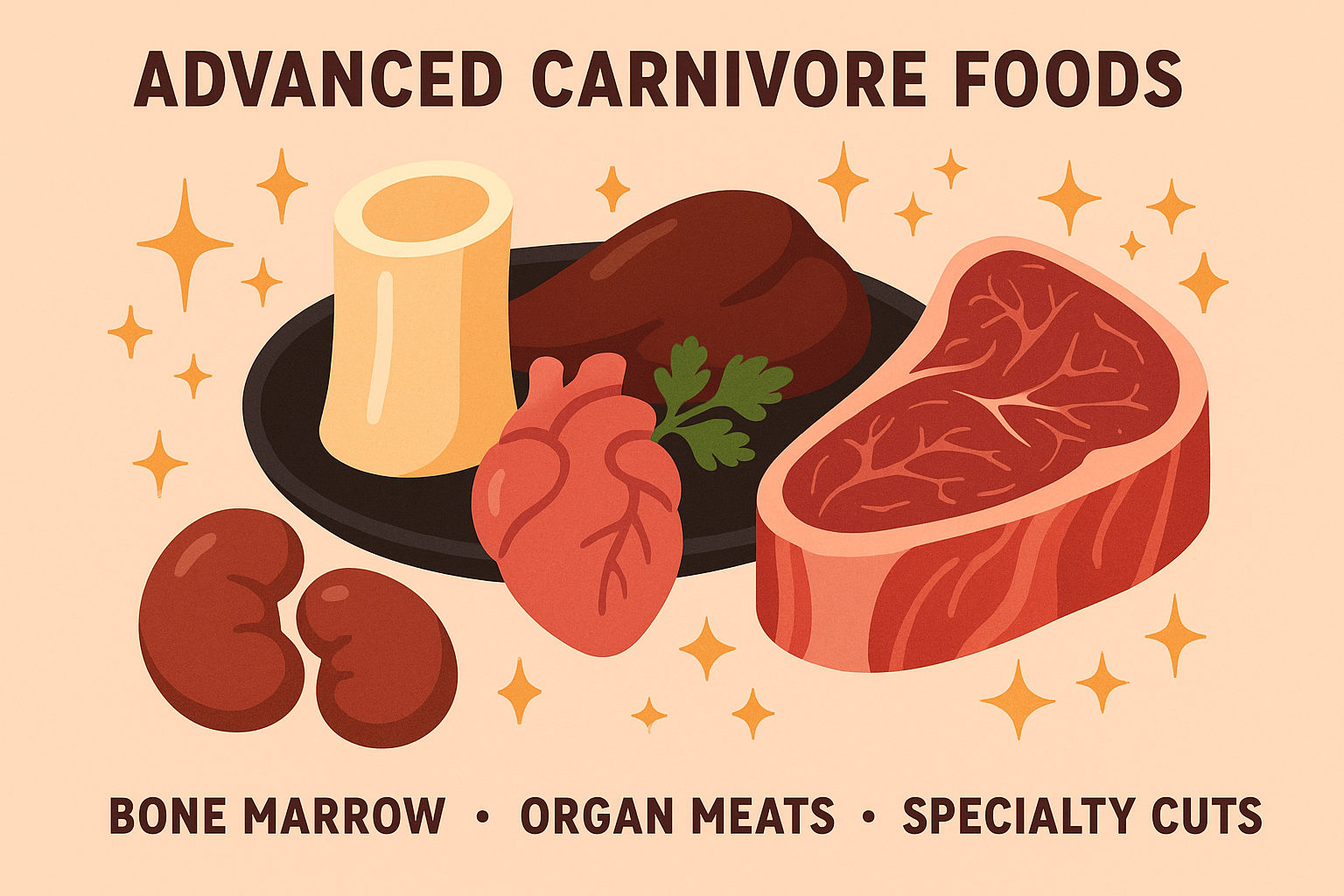Carnivore Diet Meal Plan: Why I Ditched Plants and Never Looked Back

The carnivore diet has exploded in popularity since 2018, with thousands of people reporting dramatic transformations from eating exclusively animal products. What started as an extreme dietary experiment has become a legitimate lifestyle choice for those seeking to eliminate the constant mental chatter around food decisions while potentially addressing various health concerns.
I never thought I’d be the person eating nothing but meat, eggs, and animal products. Yet here I am, three years into this journey, feeling better than I have in decades. Look, I’m not gonna lie – this transformation goes beyond just physical changes. My entire relationship with food has shifted in ways I couldn’t have imagined, and honestly, it’s been weird as hell.
For those transitioning from plant-based approaches, understanding intuitive eating principles can help bridge the gap to this animal-based diet approach. The carnivore diet takes intuitive eating to its logical extreme by eliminating decision fatigue entirely.
According to Harvard-led research, 91 percent of carnivore dieters report significant improvements in both their hunger and food cravings from Woman’s World, suggesting that this approach may offer genuine benefits for those struggling with food obsession and overeating patterns.
Table of Contents
- How Eating Meat Actually Affected My Thinking
- Getting Every Nutrient Your Body Actually Needs
- Surviving Social Situations Without Going Crazy
- The Real Timeline of What Happens to Your Body
- Your Step-by-Step Guide to Starting Tomorrow
TL;DR
- My brain felt clearer when I eliminated plant foods, and I stopped obsessing over food choices
- My body seemed to use nutrients from animals way better than plant sources – I needed less food to feel satisfied
- Social situations require strategy, but you can eat out and attend events without compromising your diet
- Expect three messy phases: feeling like crap (week 1), energy swings (weeks 2-8), and finally feeling normal again (3+ months)
- Start with whatever meat’s on sale, add organ foods gradually if you can stomach them, and drink lots of water with salt
How Eating Meat Actually Affected My Thinking
I never expected how dramatically my relationship with food would change when I went carnivore. The constant mental chatter about what to eat just… disappeared. And I’m talking about that voice in your head that’s like “Should I have a salad? But I want pizza. Maybe just a small pizza? Okay fine, salad with pizza toppings.” That voice went quiet, which honestly freaked me out at first.
This isn’t about some magical brain transformation – it’s more like when you finally clean out that junk drawer that’s been driving you nuts. Suddenly you can find stuff, and you’re not stressed every time you open it.
Recent success stories highlight this phenomenon perfectly. “Food noise” – that constant brain chatter about what to eat next from Woman’s World has become a recognized issue, with one woman losing 60 pounds after the carnivore diet eliminated her obsessive food thoughts within just two weeks of going strict.
The carnivore approach fundamentally changes how your brain processes hunger, satiety, and food rewards. Most people spend enormous mental energy thinking about their next meal, planning elaborate recipes, or fighting cravings. When you eliminate those variables, that mental space gets freed up for other stuff – like actually paying attention during meetings instead of wondering what’s for lunch.
How Eliminating Choices Actually Freed My Mind
I used to spend an embarrassing amount of time standing in grocery aisles debating between different vegetables like it was a life-or-death decision. Now I walk straight to the meat section, grab what looks good, and I’m done. My weekly grocery trips went from an hour of wandering around to 15 minutes of focused shopping.
The mental energy I used to spend debating meal choices got redirected to other areas of my life. I found myself making better decisions at work, having more patience with my family, and feeling less mentally exhausted by the end of each day. It’s like I had been running background apps on my phone that were draining the battery, and suddenly they were all closed.
Think about how much time you spend each week planning meals, reading nutrition labels, or standing in grocery aisles debating between different options. I was spending probably 2-3 hours a week just thinking about food. Now that time goes to actually living my life.
Why Fewer Options Made Everything Better
My buddy Mike used to stress-eat his way through every work deadline, constantly debating what to order for lunch while panicking about his presentation. Now he just grabs leftover steak from the fridge and calls it lunch. Is his life perfect? Nah. But he’s not having anxiety attacks in the break room anymore, and his coworkers have stopped asking if he’s okay.
The carnivore approach streamlines your entire relationship with food. You wake up knowing exactly what you’ll eat. You shop with a simple list. You cook with minimal ingredients. This simplicity creates mental space for other priorities in your life – or at least for worrying about more important stuff than whether you should have chicken or fish.
I used to meal prep on Sundays for like 3 hours, making elaborate bowls with seventeen different ingredients. Now I cook a bunch of ground beef, hard-boil some eggs, and call it done. Same nutrition, way less stress.
My Cravings Started to Calm Down
Animal proteins and fats trigger completely different reward pathways than processed foods or even whole plant foods. Over time, this helped calm down my brain’s response to food, reducing those intense cravings that used to control my eating patterns. The changes were subtle at first but became profound as my system adapted.
I used to get these intense sugar cravings around 3 PM that would send me to the vending machine like a zombie. After a few months on carnivore, those cravings just… stopped. I’ll be honest, it was kind of unsettling at first. Like, who was I without my afternoon candy bar ritual?
Tapping Into Your Genetic Programming
Going carnivore felt like activating dormant metabolic pathways that modern mixed diets never fully utilize. There’s something almost primal about how your body responds – you’re finally eating the way your genetics expect. I’m not saying we should all live in caves, but there’s something to be said for eating foods your great-great-grandmother would recognize.
Your body has sophisticated systems for processing animal proteins and fats that have been refined over millions of years of evolution. The carnivore diet allows these systems to operate at peak efficiency without the interference of plant compounds that can disrupt digestion and absorption.
When My Brain Started Running on Ketones Instead of Sugar
The mental clarity from ketone-fueled brain function is remarkable, especially during the adaptation phase. My brain fog lifted, and I experienced sustained energy without the glucose roller coaster. It’s like switching from dial-up internet to high-speed – everything just works better.
This metabolic shift shares similarities with finding your carb tolerance on keto, but takes the approach to its logical extreme. The carnivore diet pushes your body into deep ketosis and keeps it there consistently.
I used to experience afternoon energy crashes that left me reaching for coffee or snacks. Now my energy levels stay stable throughout the day, and my concentration doesn’t waver during long work sessions. Though I’ll admit, I still drink coffee because I’m not a monk.
How Meal Timing Fixed My Internal Clock
Eating protein-rich meals within specific windows naturally regulated my circadian rhythms. Sleep quality improved, energy levels stabilized throughout the day, and my body developed predictable hunger patterns that aligned with optimal metabolic function. The timing became intuitive rather than forced.
Carnivore eating naturally creates intermittent fasting windows because animal proteins are so filling. You’ll find yourself eating fewer meals without feeling deprived or hangry between them. I went from eating every 3 hours to eating maybe twice a day, and I actually had to set reminders to eat because I’d forget.
The Inflammation Thing Nobody Talks About
Eliminating plant compounds can dramatically reduce systemic inflammation for many people. Joint pain decreases, cognitive function improves, and overall inflammatory markers often normalize. This isn’t universal, but the results can be life-changing for those who respond well to removing plant compounds.
I experienced significant improvements in joint stiffness and morning brain fog within the first month of going carnivore. These weren’t changes I was expecting, but they became some of the most noticeable benefits of the diet. My knees stopped creaking when I got out of bed, which was a weird but welcome surprise.
Getting Every Nutrient Your Body Actually Needs
Forget everything you learned about nutrition labels and RDAs. Carnivore meal planning requires completely reframing how you think about nutrients. It’s about maximizing how well your body actually uses what you eat rather than meeting traditional guidelines that were probably made by people who never tried eating this way.
The carnivore diet challenges conventional nutrition wisdom at every turn. You’ll discover that many nutrients you thought were essential can actually be made by your body when given the right building blocks from animal foods. Your high school health teacher is probably rolling over in her grave, but here we are.
Recent research is addressing nutrient concerns head-on. A 2025 study published in Nutrients journal examined “Can a carnivore diet meet all your nutrient needs?” from News Medical, highlighting that traditional RDA standards may not apply to carnivore dieters since their bodies process animal-based nutrients differently than those on mixed diets.
The Hierarchy of Animal Foods That Actually Matter
Understanding which animal foods pack the biggest nutritional punch helps you create meal plans that deliver maximum value. This hierarchy system helps you prioritize foods that give you the most bang for your buck nutritionally – because let’s be real, good meat is expensive.
The carnivore diet food list isn’t just about eating any animal products – it’s about strategic selection based on nutrient density and what you can actually afford. Some animal foods provide exponentially more nutrition than others, and some are way easier on your wallet.
| Nutrient Density Tier | Foods | Key Nutrients | Frequency |
|---|---|---|---|
| Tier 1: Essential | Beef liver, lamb kidney | Vitamin A, B12, folate, iron | 2-3x per week (if you can handle it) |
| Tier 2: Foundation | Ribeye, ground beef, eggs | Protein, B vitamins, zinc | Daily |
| Tier 3: Variety | Salmon, chicken thighs | Omega-3s, selenium | 3-4x per week |
| Tier 4: Optional | Bone broth, aged cheese | Collagen, calcium | When you feel fancy |
Why Organ Meats Are Non-Negotiable (Even Though They’re Gross)
Liver, heart, and kidney provide concentrated vitamins and minerals that muscle meat simply cannot supply. These aren’t optional additions if you want to do this right – they’re essential components that require specific preparation methods and a strong stomach. Getting comfortable with organ meats is crucial for long-term success and optimal nutrition.
I started with liver capsules because I couldn’t stomach the taste initially. Even thinking about eating liver made me gag. Gradually, I worked up to eating fresh liver twice per week by hiding it in ground beef. The energy boost was noticeable within days of adding organ meats to my routine, but I still have to psych myself up before eating it.
The carnivore diet without organ meats is like trying to run a car on cheap gas – it’ll work, but not optimally. Liver contains more vitamin A than any other food source. Heart provides CoQ10 that supports cardiovascular function. Kidney delivers B vitamins in concentrations that make supplements look pathetic.
Balancing Fats for Hormone Production
Different animal fats provide different fat-soluble vitamins (A, D, E, K) that are absolutely critical for hormone production and cellular function. Strategic fat selection ensures you’re getting the full spectrum of nutrients your endocrine system needs to function optimally. The balance matters more than the total amount, though honestly, I just eat whatever tastes good and seems to work.
Carnivore success depends heavily on getting adequate fat intake from diverse animal sources. Beef tallow provides different nutrients than pork lard or duck fat. Variety ensures comprehensive nutrition, plus it keeps things from getting boring.
Making Your Body Actually Use What You Eat
Animal-based minerals have way better absorption rates compared to plant sources, but timing and combinations still matter for maximum uptake. Your body processes iron, zinc, and other minerals from animal foods with remarkable efficiency, but you can still optimize this with smart planning.
My body seemed to use nutrients from animals way better than anything I got from plants. Even though animal nutrients are highly available, you can maximize their utilization with smart planning – or you can just eat meat and see what happens, which is honestly what I did.
Absorption rates for animal-based nutrients often exceed 90%, compared to 10-30% for plant-based equivalents. This means you need significantly less food to meet your nutritional requirements on the carnivore diet, which is good because quality meat isn’t cheap.
The Iron Thing That Actually Works
Red meat provides iron that your body can use immediately, unlike plant-based iron that requires conversion processes. Timing your iron-rich meals around physical activity maximizes utilization and prevents the fatigue that comes from poor iron absorption. This is especially crucial for women with higher iron needs.
My friend Jennifer, a marathon runner, struggled with fatigue despite eating spinach and taking iron supplements religiously. Within three weeks of switching to daily beef consumption, her energy levels stabilized and her running performance improved dramatically. Her bloodwork showed iron levels had normalized for the first time in years, which blew her doctor’s mind.
Carnivore dieters rarely experience iron deficiency because the iron from meat is so efficient. The body can regulate uptake based on its needs, preventing both deficiency and overload. It’s like the difference between trying to fill a bucket with a garden hose versus a fire hose – one actually gets the job done.
Surviving Social Situations Without Going Crazy
The social aspect of carnivore eating is honestly the hardest part. You’ll face everything from confused looks to people acting like you’ve joined a cult. I’ve become that person who calls restaurants ahead. Yes, it’s embarrassing. My mom still tries to sneak vegetables onto my plate like I’m five. Dating got weird when I had to explain why I don’t eat salad.
I’ve navigated everything from wedding receptions to business dinners while maintaining my carnivore approach. The key is preparation, confidence, and having backup plans for when things don’t go as expected. Also, developing thick skin because people have opinions about everything you put in your mouth.
Just as navigating sustainable eating choices requires social awareness, carnivore dining demands strategic planning for various situations. You’re essentially operating outside the normal social food framework, which makes some people uncomfortable for reasons I still don’t understand.
Mastering Restaurant Situations Like a Pro
Eating out doesn’t have to be stressful when you know how to navigate menus and communicate with staff effectively. Most restaurants can accommodate carnivore requests if you approach it right. The key is confidence, clear communication, and having backup plans for when the server looks at you like you’ve lost your mind.
I’ve successfully ordered carnivore meals at Italian restaurants, sushi bars, and even vegan establishments. The secret is knowing what to ask for and how to ask for it without creating drama. Though I’ll admit, ordering “just the meat” at a vegan restaurant was an adventure.
How to Modify Any Menu Without Being That Customer
Learning to request modifications confidently while maintaining positive relationships with restaurant staff is an art form. You can get what you need without being the difficult customer everyone remembers. Specific communication techniques make all the difference in getting cooperation rather than eye rolls.
Yes, I’m that person who orders a burger without the bun, fries, or basically anything that makes it a burger. My grocery shopping got really boring, really fast, but restaurant ordering became an exercise in creativity and diplomacy.
Carnivore Restaurant Survival Checklist:
- Call ahead to discuss options with the kitchen (seriously, do this)
- Ask for grilled meats with no seasoning or marinades
- Request butter or animal fat instead of vegetable oils
- Substitute vegetables with extra meat or eggs
- Bring your own salt if needed
- Have backup restaurant options researched
- Tip well when staff accommodates special requests (karma points)
Handling Parties and Events Without Drama
Social events require pre-planning strategies that go beyond eating beforehand. Host communication, backup plans, and graceful ways to handle questions about your eating choices prevent awkward situations. Sometimes you’ll need to eat before you go, but you can still participate fully in social experiences.
I’ve become a master at eating a full steak dinner before going to parties where I know there won’t be anything I can eat. Do I feel weird watching everyone else eat cake while I sip water? Absolutely. But it’s better than the hangry alternative.
There were days I stared longingly at my coworker’s salad (yes, really). The awkward dinner party incident where I brought my own ground beef patties still haunts me, but hey, I didn’t starve.
Managing Family Dynamics and Shared Kitchens
Implementing carnivore eating in a household with omnivore family members requires negotiation skills and practical organization strategies. You’ll need systems for meal prep timing, equipment usage, and cooking space that work for everyone without creating World War III in your kitchen.
My family thought I’d lost my mind initially. My kids kept asking why I wasn’t eating “normal food,” and my spouse was convinced I was going through some kind of midlife crisis. Fair point, honestly.
Organizing Your Kitchen for Multiple Eating Styles
Shared kitchen optimization involves strategic organization of cooking spaces, meal prep timing, and equipment usage. You can accommodate both carnivore and omnivore needs without doubling your workload or creating chaos. The right systems make it work for everyone involved.
The Martinez family (my neighbors) solved their kitchen conflicts by designating specific prep days: Mom does carnivore meal prep on Sundays (ground beef, pre-cooked bacon, hard-boiled eggs), while Dad handles plant-based prep on Wednesdays. They share the grill on weekends, cooking everyone’s proteins together but keeping sides separate. This system eliminated daily cooking negotiations and reduced overall kitchen time for both parents.
Let’s be real – eating this much quality meat isn’t cheap, and it’s way easier when you don’t have kids demanding mac and cheese every night.
The Real Timeline of What Happens to Your Body
The carnivore transition follows predictable phases, but they’re messier than anyone tells you. Understanding what’s happening in your body during each stage helps you prepare for the suck and adjust your approach accordingly. This isn’t about willpower – it’s about surviving long enough for your body to figure out what you’re doing to it.
I wish someone had explained these phases to me before I started. Knowing what to expect would have prevented the panic I felt during week three when my energy levels were all over the place and I seriously considered giving up.
Week 1: I felt like garbage and questioned everything. Week 3: Had a complete meltdown at Whole Foods. Month 2: Started feeling human again. Month 6: Okay, maybe this actually works.
The Three Messy Phases You’ll Actually Experience
Carnivore adaptation happens in distinct metabolic phases: initial feeling like crap, energy swings that make you question your sanity, and finally not thinking about food all the time. Each phase has specific characteristics, challenges, and ways to not completely lose your mind. Knowing what to expect prevents panic when your body goes through normal adaptation processes.
Your body needs time to figure out how to burn fat efficiently, adjust hormone production, and optimize nutrient absorption pathways. It’s not pretty, and it’s definitely not linear.
| Phase | Timeline | What’s Happening | How You’ll Feel | What Actually Helps |
|---|---|---|---|---|
| Feeling Like Crap | Days 1-7 | Body burns stored sugar | Tired, headaches, cranky | Salt, water, patience |
| Energy Swings | Weeks 2-8 | Learning to burn fat | Up and down, digestive weirdness | More salt, more patience |
| Not Thinking About Food | 3+ months | Seamless fuel switching | Stable energy, reduced hunger | Fine-tuning, celebrating |
Week One: Your Body Dumps All Its Sugar
The first week involves your body getting rid of stored glucose while your digestive system starts producing enzymes for animal proteins. This phase requires specific hydration and salt protocols to prevent the crushing fatigue and brain fog that can make you want to quit. Your body is literally learning how to process a completely different fuel source.
During this crucial first week, many people experience what’s commonly called “keto flu” symptoms. According to meal planning data from Listonic’s carnivore diet research, the average person consumes approximately 2,100 calories with 170g fat, 0g carbs, and 150g protein daily during the adaptation phase, representing a dramatic shift from standard diets.
I was consuming 2-3 teaspoons of sea salt daily during my first week to prevent the crushing headaches and fatigue. My family thought I was having a nervous breakdown, and honestly, I wasn’t sure they were wrong.
Weeks 2-8: Energy Swings That Make You Question Your Sanity
Fat adaptation is where things get interesting – your body becomes efficient at burning fat for fuel while developing ketone production. Energy levels start to stabilize, hunger decreases, and you begin experiencing the mental clarity that carnivore advocates rave about. This phase requires patience as your metabolism completely shifts gears.
The digestive changes during this phase can be intense. Your gut bacteria composition shifts dramatically when you eliminate fiber and plant compounds. Some people experience temporary digestive upset as their microbiome adapts to processing only animal products. I won’t go into details, but let’s just say I became very familiar with my bathroom schedule.
Why I almost quit in week 3: My energy was all over the place, I felt bloated despite eating less food, and I was convinced I was slowly poisoning myself. The only thing that kept me going was spite and the fact that I’d already told everyone I was doing this.
Month 3 and Beyond: Finally Feeling Normal Again
Achieving true metabolic flexibility means your body can seamlessly switch between different fuel sources while maintaining stable energy and optimal body composition. This is where the diet becomes effortless and your body operates efficiently – or at least stops fighting you every step of the way.
The carnivore diet creates a unique metabolic state where your body becomes incredibly efficient at utilizing both dietary fats and stored body fat for energy. Hunger becomes a gentle suggestion rather than an urgent demand that sends you to the pantry at 10 PM.
Am I going to eat this way forever? Honestly, I don’t know. Right now it works, and that’s enough. Will this solve all your problems? Definitely not. But it solved some of mine, and that’s more than I can say for most diets I’ve tried.
Your Step-by-Step Guide to Starting Tomorrow
Starting carnivore doesn’t have to be overwhelming if you follow a systematic approach. Most people fail because they try to change everything at once without addressing the practical, physiological, and psychological barriers. I made every mistake possible during my first attempt. The second time, I followed a structured approach that made the transition smooth and sustainable.
Don’t stress about grass-fed everything until you figure out if you can even stick to this. Start with whatever meat’s on sale at your regular grocery store and see how it goes.
The Week That Changes Everything
The first seven days require a specific approach that gradually eliminates plant foods while introducing optimal animal-based meal timing and portions. This isn’t about going cold turkey on everything – it’s about strategic elimination that minimizes how terrible you’ll feel while maximizing your chances of not giving up.
Your carnivore diet meal plan should start with a systematic elimination process rather than an abrupt dietary overhaul. This approach reduces the shock to your system and improves long-term adherence, though you’re still going to feel weird for a while.
Days 1-3: Strategic Plant Elimination
Systematically removing processed foods first, then vegetables, then fruits while maintaining adequate protein prevents muscle loss and energy crashes. The sequence matters because your body needs time to adjust digestive enzyme production. Rushing this process often leads to digestive discomfort that makes you want to quit immediately.
Day 1-3 Elimination Checklist:
- Remove all processed foods and snacks (this includes your secret stash)
- Eliminate grains, bread, and pasta
- Cut out vegetable oils (use butter/tallow instead)
- Remove fruits and fruit juices
- Increase protein portions by 25%
- Add extra salt to all meals (seriously, more than you think)
- Drink water when hungry between meals
The time I caved and ate pizza (and felt terrible): Day 2 of my first attempt. I felt so awful after eliminating everything that I ordered a large pizza and ate half of it. Felt even worse afterward and had to start over. Learn from my weakness.
Days 4-7: Fine-Tuning Your System
The stabilization phase involves adjusting meal timing, portion sizes, and fat-to-protein ratios based on your individual hunger signals and energy levels. Monitoring hydration and salt status becomes crucial as your body adapts to processing primarily animal foods. This is where you start feeling the benefits, or at least stop feeling actively terrible.
Research from Chomps nutrition data shows that over 2,000 people who followed carnivore meal plans for 9 to 20 months reported improvements including lower BMI, increased energy, better sleep, greater strength and endurance, and improved memory and focus, demonstrating the potential benefits that emerge during this crucial stabilization week.
Listen to your body’s signals and adjust portions and timing accordingly. Though honestly, your body might be sending mixed signals for a while, so don’t overthink it.
Building Your Carnivore Food Arsenal
Understanding which animal products provide optimal nutrition, how to source them, and how to prepare them properly makes the difference between thriving and surviving on carnivore. Animal foods aren’t equal, and knowing the hierarchy helps you make strategic choices that maximize both nutrition and what you can actually afford.
I know not everyone can afford grass-fed everything, and that’s okay. Don’t let perfect be the enemy of good enough to get started.
Your Daily Foundation Foods
Beef, lamb, pork, and poultry form the cornerstone of successful carnivore meal plans. Specific cuts work better for different meal times, and cooking methods that don’t require a culinary degree are crucial for long-term adherence. These are your reliable, everyday staples that won’t break the bank.
Foundation Foods Shopping List:
- Ground beef (80/20 fat ratio – cheaper and more filling)
- Ribeye or NY strip steaks (when you feel fancy)
- Chicken thighs with skin (way cheaper than breasts)
- Pork shoulder or chops
- Lamb chops or ground lamb (if your budget allows)
- Pasture-raised eggs (eggs are cheap and easy – lean on them hard)
- Grass-fed butter
- Sea salt or pink salt
I became a meat thermometer expert (riveting dinner conversation), but it beats food poisoning or eating leather-textured steaks.
Foods That Take You to the Next Level
Fish, eggs, and dairy products (if tolerated) enhance nutrient diversity and meal variety while maintaining strict animal-only parameters. These additions can make the diet more sustainable and enjoyable, but they’re not essential for everyone. Individual tolerance varies significantly.
Some people thrive with dairy inclusion while others need to avoid it completely. I can handle butter and aged cheese but cream makes me feel bloated. Figure out your own tolerance through trial and error.
Advanced Foods for Optimal Health
Organ meats, bone marrow, and specialty animal products provide concentrated nutrition for specific health goals or addressing deficiencies. These aren’t beginner foods, but they become important for long-term optimization. Learning to incorporate them gradually prevents overwhelm while maximizing nutritional benefits.
Start with liver capsules if you can’t handle the taste initially. Work your way up to the real thing if you can stomach it. Your body will thank you, even if your taste buds don’t.
Understanding sustainable meat choices becomes even more critical when animal products comprise your entire nutritional intake.
If you’re concerned about getting complete nutrition while simplifying your supplement routine, Organic Authority’s marine-sourced collagen offers superior bioavailability compared to traditional options. Their carefully curated wellness products can complement your carnivore journey by filling any nutritional gaps with targeted, high-quality supplements that support your overall health goals.
For those interested in supplementation alongside their carnivore approach, exploring marine collagen peptides and their benefits can provide additional nutritional support during the transition phase.
Final Thoughts
The carnivore diet meal plan isn’t another eating trend – it’s a complete reframe of how you think about food, nutrition, and your body’s needs. What started as curiosity about eliminating plants turned into a profound understanding of how my body actually functions when given optimal fuel. Or at least, fuel it seems to prefer.
Your journey will be different from mine, but the principles remain consistent. The mental changes, the metabolic adaptation, the social navigation – they’re all part of a larger transformation that goes way beyond changing what’s on your plate. Some days will be harder than others, especially in the beginning when your body is learning new metabolic pathways and you’re questioning your sanity.
Will people think I’m crazy? Probably. Is this expensive? Yeah, good meat costs money. Do I miss pizza? Every damn day. But do I feel better overall? Yeah, I actually do.
The key is approaching this systematically rather than hoping willpower will carry you through. Understanding the science behind what’s happening in your body, having practical strategies for real-world situations, and knowing what to expect during each phase of adaptation sets you up for success rather than frustration.
Remember, this isn’t about perfection – it’s about finding an approach to eating that actually works with your physiology instead of against it. The simplicity might feel strange at first, but that’s exactly what makes it sustainable long-term. My experience isn’t universal – some people feel awful on this diet. If you have a history of eating disorders, maybe skip this one. Your doctor might think you’ve lost your mind (mine did).
For additional support during your transition, consider exploring digestive health strategies that can complement your carnivore journey and help optimize your body’s adaptation process.

